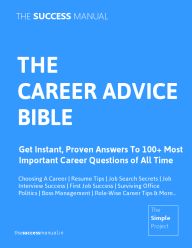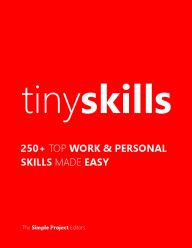On February 16, 2025 By thesuccessmanual Topic: Education and Schools, Remarkable, Book summary
This guide belongs to 100 Ways To Be Being Remarkable Series, a special project that brings you business and self-development advice from The Success Manual.
Read Part 1 of this Guide here
Test rehearsal
1. size up the exam
1. what
- from lectures, textbook, or outside reading
- cumulative
- Main themes, details, or both
- Factual or analytic answers
- Choice of questions
- What Information is provided
- Level of expertise required
- Essay, short-answer, multiple choice, combination
- Take-home or open-bok
- Who grades it
- Grader bias
2. how
- ask “What are the most important concepts I need to review?”
- review previous exams
- ask someone who has already taken the exam
- look over notes for clues
- attend review session
- skim anything the teacher has written
3. get an overview of the course
- think 80-20 rule
- review your previous exams
- review original notes
- answer expert and orientation questions
- acquire detailed expertise in one or two specific course areas
4. condense summary sheet one final time
5. reconstruct summary sheet from memory
- review original when stuck, picture it, then start reconstructing again from scratch
- when finished reconstructing, sleep immediately
- rehearse conditions and tasks you’ll face on the exam
- study in a hard chair like the posture of actual test
- if one day is all you have, make it the day before the test
- jam formulas into short term memory at last minute, then write them down ASAP
Test taking
five steps
1. catch breath
2. read directions
3. skim test
4. budget time
1. what’s the best use of my remaining time
5. attack
Put Up A Fight
1. ask teacher for help
2. rephrase question yourself
3. postpone question
4. try visualizing info in book or on summary sheet
5. start writing anything
6. think about a related question
7. examine precise wording of the question
8. if you don’t know, write down best approximation
9. if you don’t know some important fact, describe how you’d answer if you did
10. think!
11. replace the question with a related one you can answer
12. if you don’t know what something is, try answering what it isn’t
13. if you know nothing, admit it, and write an answer to your own question
14. if short on time, write “Short on time!” and answer in outline form
15. if not an essay test, consider leaving some questions blank
16. use time alloted (try not to finish early)
Giving Essay Tests
1. don’t worry about how you’ll use the time
2. examine question and attack with dialoguing
3. spend at least a fourth of time generating ideas and organizing
4. opening paragraph is most important (get down to business)
5. final paragraph is second most important
6. the more distinct paragraphs you write, the better
7. if no time to organize, start somewhere
8. the more you write, the better
9. if a thought occurs about another question, jot it down (as not to forget it)
10. write on the right pages of test booklet only
11. make corrections as neatly as possible
Giving Multiple-Choice And True/False Tests
1. read carefully
2. take questions at face value
3. before reading choices, anticipate answer then look for it
4. use process of elimination
5. read each choice
6. if unsure, mark question for later review
7. always guess if you can eliminate one choice
8. if question is simple, as why anyone would ask
9. choose the answer the test writer thinks is right
Giving Standardized Tests
1. never take a standardized test just to see how you’ll do
2. use practice materials by the people who publish the tests
3. don’t rush to finish
4. if you have time, guessing rarely hurts
5. most tests present questions in order of difficulty
6. trust hunches on easy questions, not hard
Miscellaneous
1. print
2. don’t squeeze answers onto page
3. use blue or black ink
4. show all work
5. write your name on test booklet
6. if possible, keep questions for future review
Writing Papers (take expository writing early)
1. choose topic
1. topic sources
- textbook
- lecture notes
- outside or suggested reading
- library, starting with encyclopedia and various indexes
- look for overlap with areas you know a lot about
- ask teacher
2. good topics
1. boring to you, boring to teacher
- don’t be too adventurous
- be original, but not too original
- keep it manageable
- choose a topic that will apply to more than one class
- a little controversy is good, too much is bad
- turn topic into a question
- you can change your mind
- run topic by teacher before starting
- don’t jump to conclusions (use reason, avoid emotional responses to topic)
2. explore the topic to generate ideas
- dialogue for ideas
- broaden perspective
- explore related topics and larger issues
- research for ideas
- dig deeper
3. organize and evaluate ideas
- group similar ideas under major headings
- search for more specific categories
- arrange the groups and the ideas within the groups
- evaluate ideas
4. take a position
- best opinions are interesting, precise, and supportable
5. support with specifics
- each point needs to be backed up with details, examples, and supporting evidence & don’t forget to provide evidence of opposing viewpoints you include
- acknowledge assertions and assumptions
- if unsure of a fact, don’t use absolute words
6. write first draft
1. background/introduction
- forms the basis of the first impression
2. thesis statement is a condensed version of the essay itself
3. body
- develop the body by presenting the cons rather than the pros
4. conclusion
- as important as the introduction
7. revise, edit, and polish
1. get feedback
- what is my main point
- where is the essay unclear
- does it flow logically
- where do you lose interest
- what do you disagree with
- does it omit anything interesting
- do I present opposing views convincingly
2. Edit from big picture down
3. Check structure and organization
4. Check paragraphs (more paragraphs appear more organized)
5. Check paragraph links
6. Check transitions
7. Check sentence links
8. Check diction and style
9. Use buzzwords (see list); Big words impress
10. Check spelling
11. Follow accepted style format
12. Give it one final review
13. Teachers examine
- Your ideas (more important than the facts)
- Ideas supported by facts
- Organization and style conform to accepted academic model
- Beginning and end are most important
- Use pen
- If using 3x5s, write general subject on top for later sorting
- Write first draft only on one side of paper
- Learn to type
- Use computers w/surge protector & save frequently
- Start early
Manage time
1. must have
- daily to-do list
- clean weekly class schedule
- general wall calendar
- clean calendar reserved for major tests and papers
2. carry a pen & something to work on
3. remember 80-20 rule
4. each week
- before class review notes
- after class combine class and reading notes
-. once a week, consolidate notes & update summary sheet
5. before term
- scout out courses
6. first weeks
- work out expert questions
- fine supplementary info source
- create initial summary sheet
- seek out teacher’s previous exams
- get an overview of course
- sign up for backup “add/drop” classes
- decide on final schedule
7. last weeks
- reduce summary sheet to one page
- begin finals prep
- decide on next classes
"All thinking is the process of making successively better guesses."
- Adapted from ‘What Smart Students Know’ by Adam Robinson
If you liked this article, please bookmark it on Delicious or share on Twitter. Thanks, friends. Follow us on Twitter.
We don't recommend any other guide than our very own The Success Manual - Encyclopedia of advice to 130 most important skills.

